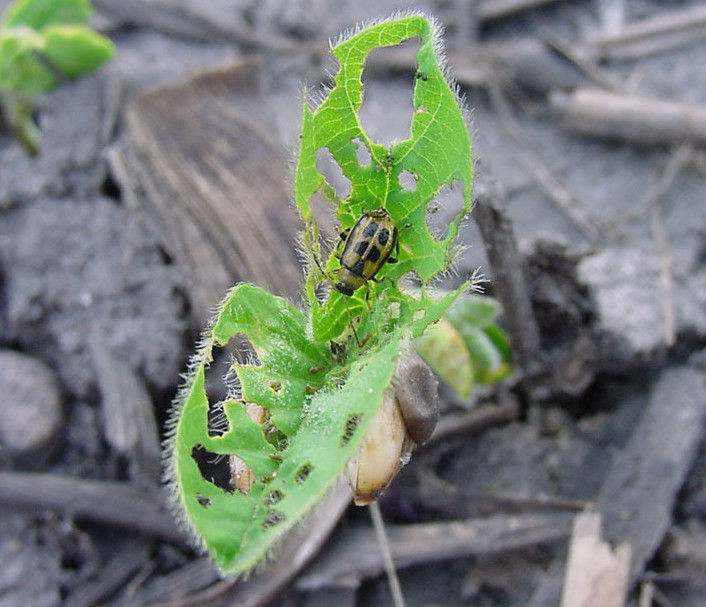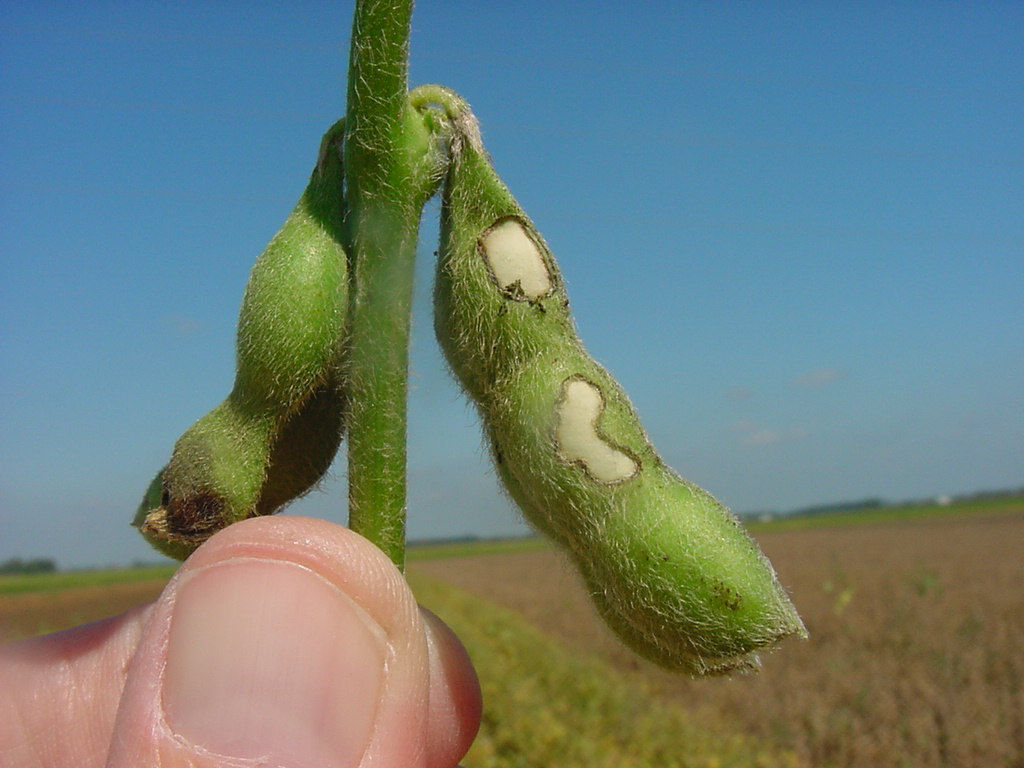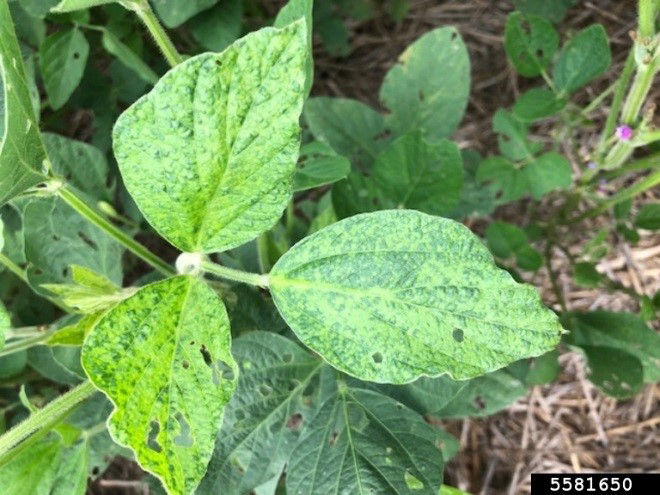Soybean Bean Leaf Beetle
October 25, 2023
There is a long soybean bean leaf beetle history as it was discovered in 1771. The insect can be detrimental in some years. Adults feed on soybean foliage or directly on the pods (Figures 1 and 2). Besides feeding damage, they can vector Bean Pod Mottle virus when pods are fed upon.
The beetles can be distinguished by a few distinct markings. They have an oval shape that is typically yellow with a few dark markings. The beetles can be green, yellow, orange, or red in color. The most distinct marking is a dark “triangle” on the neck area of the beetle. When the beetle lays eggs, they are small, usually orange, and are typically laid on the soil at the base of the soybean stems. Once the eggs hatch, the larvae can be distinguished by a lighter or white color with a brown head and brown spot on the last section of their body and are most likely found on the ground near the stems. Bean leaf beetles can also be found on green beans, clover, other legume plants, and cucurbits, such as pumpkins.


The bean leaf beetle annual life cycle consists of an overwintering population of adults, that feed on emerging seedlings. Females deposit eggs in the soil and the larvae feed on the soybean roots, adults emerge in about a month in the central United States. The summer generation of adults feed on soybean foliage until it matures to a point where the pods are attractive to the adult. The adult then begins to feed on green pods. In southern latitudes, there is a third generation. Overwintering survival is dependent on winter temperatures and depends on how many days are below 14° F.
The adults usually feed for about 21 days on leaves and pods. While the soybean can compensate for defoliation, heavy infestations can still cause yield loss. Larval feeding on roots and nodules appear not to result in any economic injury. The adults in addition to feeding on the foliage, can transmit bean pod mottle virus and some seed borne fungi. Bean pod mottle virus is normally found in the central United States and causes symptoms in the leaflets including puckering while also mottling pods and seed coats (Figure 3). The virus can also be associated with green stem syndrome and reduction of seed size or pod set. The seed coat can become shriveled affecting food grade soybeans.

It is imperative to understand the symptoms of this insect along with the repercussions of the bean pod mottle virus. Scouting should be completed in mid-May for larvae and a few weeks later for adults. The sooner the insect is found, the earlier it is for a grower to manage the infestation and reduce any major issues if economic injury is apparent.
Jared Hauseman
Channel Agronomist
Source:
Dean, A., Hodgson, E., Bradshaw, J., and Rice, M. 2022. Bean leaf beetle. Integrated Crop Management. Iowa State University. https://crops.extension.iastate.edu/bean-leaf-beetle
Web site verified 9/21/23. 1110_292101
You may also like...
Here are some articles that may also be of interest to you